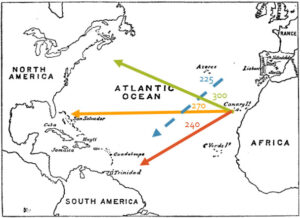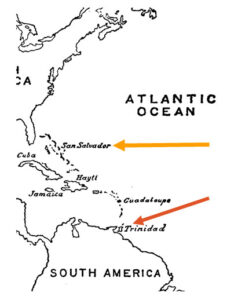When Columbus set sail from the Canary Islands, he had to do more than follow the compass due west. As we saw with Steven, there are currents that also must be taken into account. These currents will cause the ship to drift off course, even though it appears to be heading in the correct direction the whole time. If Columbus wanted to go due west (270 degrees), but there were southern currents (maybe 225 degrees), he might actually have to steer a more northerly course (maybe 300 degrees) in order to go due west.

The same thing happens with our lab equipment. Over time, the accuracy and reliability of any instrument is subject to drift. You may think you are headed to San Salvador, but may end up in Trinidad. When calibration and maintenance is performed, an “As Found” reading is often recorded. This reading lets you know how far your instrument’s accuracy has drifted. You may think you are in San Salvador, but the “As Found” reading may let you know that you have actually been in Trinidad for some time.

What needs to be determined is: what is the acceptable drift or tolerance of a particular instrument or test? This value can then be used to qualify the “As Found” reading as a passed or failed reading. If “As Found” failures occur, there are two things we can do to prevent this in the future. We can try to control the factors that create the drift, and/or we can increase the frequency of our calibration and maintenance.

